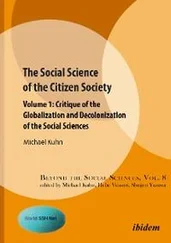The uncertainty of global development is greatly exacerbated by the fact that new centres of civilization are beginning to compete with the countries of Europe and North America. As an example, China is moving steadily toward first place in the global economic vertical. On the one hand, it is a state with a constantly growing economy and industry. On the other hand, China is an independent civilization with a developed culture, dating back to the third millennium BC.
1.3 Globalization and the principles of its study
The phenomenon of globalization has been studied based on various views of reality. There are several ways to classify theoretical approaches. In a number of works, globalization is viewed as an objective historical trend of deepening interstate and inter-civilizational interactions and contacts. The study of this phenomenon was also carried out through the study of its geo-economic and geopolitical aspects, as well as the impact of globalization on the nation state and its structural subdivisions. In addition, attempts were made to comprehensively summarize the processes of globalization. It was implemented in the “world system” approach to the analysis of this phenomenon, which sees it as a period in the development of society characterized by increasingly multidimensional and comprehensive interactions between social subjects and entities.
One of the leading objective components of globalization is the global crisis of resources and demographics. It arose in the process of increasing global connectivity, that is, with the formation of economic, transport, and information components of globalization. Based on the analysis of this phenomenon, the resource- and environment-based approach to the assessment of global development appeared and grew in influence, and one of its offshoots was transformed into the “concept of sustainable development”. The basis of this concept is the clarification of objective natural resource limitations (“limits of growth”) that stand in the way of the material and economic activity of humankind. As a consequence, within the framework of this theory, studies have been conducted to determine the optimal size of the global population 10 10 Appendix 1 has a full list of various schools of thought on globalization and authors who belong to them.
.
Philosophers who developed several concepts of stage-by-stage development of humankind toward creating a single global society can be considered the forerunners of modern globalism. Fundamental works of this socio-philosophical school of thought were created by philosophers and scientists such as I. Kant, K. Marx, P. Teilhard de Chardin, V. Vernadsky, A. Toynbee, B. Russell, K. Jaspers, etc.
Based on the scale of the transformation of society, the era of globalization is similar to the “Axial Age”. This pivotal age, singled out by Karl Jaspers, was characterized by the formation of the first local civilizations, the separation and isolation of the political sphere, and the emergence of the world’s largest religions. During this age, the basic social structures and organizations that defined world history for many centuries were created 11 11 Safonov, A.L. Osevoe vremya-2: vozvraschenie k istokam ili pogruzhenie vo t’mu? // Vestnik Buryatskogo gosudarstvennogo universiteta, #14 (Philosophy, sociology, political sciences, cultural sciences). Ulan Ude, 2012, pp. 34—42.
. Such changes in society lead to significant difficulties in understanding and studying such a phenomenon in the history of social development as globalization.
This phenomenon is usually described in the well-known categories of internationalization of economies and integration of states, i.e. in terms of economic determinism and the concept of world politics as the interaction of sovereign states. Most models of globalization have been created based on periodization, with its characteristic economic determinism. This approach views globalization as an objectively determined, mainly economic, process of the spread and universalization of the Western economic model in its neoliberal version. This created the impression of becoming a global “super-society” 12 12 Zinoviev, A.A. Na puti k sverkhobschestvu. M.: Tsentrpoligraf, 2000, 637 pp.
(A. Zinoviev), the proclamation of the “end of history” 13 13 Fukuyama, F. The End of History and the Last Man. / Konets istorii i poslednii chelovek. M.: Ermak, AST, 2005, 592 pp.
(F. Fukuyama), and the emergence of a global “Empire” 14 14 Hardt, M. Negri, A. Multitude: War and Democracy in the Age of Empire. M.: Praksis, 2004, 440 pp.
(M. Hardt, A. Negri) with a Euro-Atlantic civilization core and several rings of the dependent and subject-less periphery.
In addition, globalization is largely considered based on the concepts of civilizational theories. Thus, these ideas helped the concept of “hybridization” of society, which enjoyed a certain popularity. It suggests that one of the significant characteristics of globalization is the process of cultural, racial, and ethnic mixing, i.e. meticization 15 15 Prazauskas, A.A. Etnonatsionalizm, mnogonatsionalnoe gosudarstvo i protsessy globalizatsii / Ethnonationalism, multinational state and globalization // Polis, 1997, #2, pp. 95—105.
. Thus, “hybridization” is the mixing of races and peoples into a single social community, with a common culture. In this case, it should be noted that this concept reduces the emergence of a new social reality to a mechanical superposition, an overlay of already known phenomena and entities. It does not take into account, and does not presuppose, possible qualitative changes in the society as a result of convergence.
Therefore, most of the concepts describing globalization are developed within two main groups of theories. The first is represented by formational models, which base the development of society on the economy. The second group consists of civilizational theories, with their typical focus on the regional peculiarities of human development. At the same time, a significant number of hybrid theories have been created that simultaneously use the methodological basis of these two types of concepts.
As an example, we can cite the theoretical constructs of A.A. Guseinov 16 16 Guseinov, A.A. Lichnost i natsiya v svete globalizma.// Eastern Christian civilization and eastern Christian society in the modern society. M., 2001, pp. 25—33.
. He believes that globalization is the transformation of historically established, quite independent cultural-civilizational and national state forms of social life into a single system that encompasses all humankind. And this new system is inevitably opposed to those forms of collective, which it is designed to remove in favour of some new synthesis, which is so broad as to be universal.
The conflict between the global and the local becomes particularly evident and enters a dramatic confrontation when globalization goes beyond the economy, capturing the cultural, political, and ideological – in the broad sense of the term (world view, mental) – sphere of life. Thus, according to V.S. Stepin, globalization is a choice between two scenarios, which are known as the concept of the “golden billion” and the concept of a “dialogue of civilizations” 17 17 Stepin, V.S. O typakh tsivilizatsionnogo razvitiya i stsenariev buduschego. Epokha peremen i stsenarii buduschego. M., 1996, 368 pp.
.
The concept of the “golden billion” arises from the perception of globalization as the domination, the triumph of the civilization of the West and Western nations, “the end of history” (Fukuyama) 18 18 Fukuyama, F. The End of History and the Last Man. / Konets istorii i poslednii chelovek. M.: Ermak, AST, 2005, 592 pp.
. Everyone else should strive to emulate them under the threat that they will otherwise be doomed to a peripheral or semi-peripheral existence. Accordingly, the future global society is thought of as a similar feudal-hierarchical system with western European civilization in the centre and concentric circles of different levels located around it. The concept of a “global human anthill” as the ultimate and final variant of humanity’s integration within the framework of the Western paradigm was sociologically predicted and depicted in A.A. Zinoviev’s works 19 19 Zinoviev, A.A. Globalny cheloveinik. M., 1994, 448 pp.
.
Читать дальше












